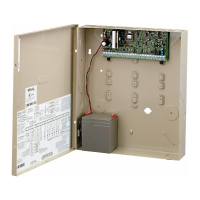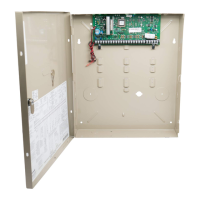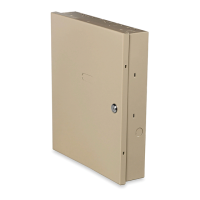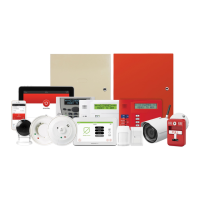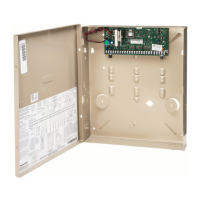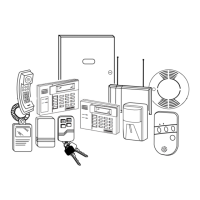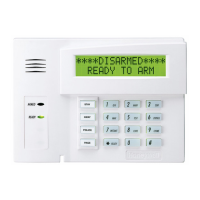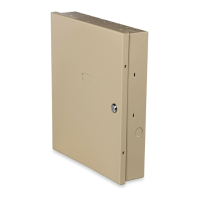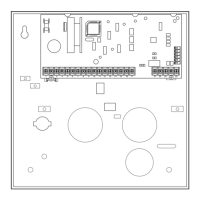
Do you have a question about the Honeywell Ademco Vista-12D and is the answer not in the manual?
| Zones | 8 |
|---|---|
| Hardwired Zones | 8 |
| Wireless Zones | 0 |
| Partitions | 1 |
| Keypads Supported | Up to 4 |
| Power Supply | 16.5VAC, 25VA transformer |
| Battery Backup | 12VDC, 4AH |
| Type | Control Panel |
| Communication | POTS |
System capabilities including partitions, zones, and security codes.
Lists supported keypads, expanders, receivers, transmitters, and other devices.
Key installation points regarding addressable devices, power, relays, and function keys.
Procedures for mounting the control cabinet and installing the lock mechanism.
Steps for securely mounting the main circuit board within the cabinet.
Instructions for connecting keypads, setting addresses, and using supplementary power.
How to connect sounders for alarm output, including supervision.
Guidance on connecting the AC transformer and wiring table for correct gauge.
Steps for installing the backup battery and its function.
How to connect and configure basic wired zones (NO, NC, EOLR, Zone Doubling).
Instructions for connecting 2-wire and 4-wire smoke detectors, including reset options.
Connecting and assigning addresses for zone expander modules.
Using the 6164 keypad for wired expansion zones and relay output.
Mounting and connecting the RF receiver and its operational notes.
Procedures for installing wireless transmitters and battery considerations.
Mounting, addressing, and connecting relay modules like 4204/4229.
Installing and connecting powerline carrier devices (X-10) via a modulator.
Connecting the incoming phone line for system communication.
Overview of system programming methods and available modes.
How zones are assigned to partitions and the function of common areas.
Identifying keypads by their assigned addresses and program fields.
Configuring data fields for sending reports to pagers.
Defining how the system responds to faults in each zone.
Procedures for programming the system from a keypad, including data field entry.
Introduction to data fields, their titles, entries, and explanations.
Fields related to installer code, quick arm, and RF options.
Fields for zone alarm sounding, fire sounder timeout, and exit/entry delays.
Fields for PABX access, phone numbers, account numbers, and report formats.
Overview of zone programming procedures using *56 and *58 modes.
Step-by-step guide to programming zones using the *56 menu.
Procedures for installers experienced with programming controls.
Using predefined templates to program wireless keys.
Mapping output devices (relays, X-10) to addresses and unit numbers.
Defining output functions based on events, partitions, and output actions.
Using zone lists to group zones for specific system actions.
Programming functions for the four keypad function keys (A-D).
Entering zone and partition descriptors for keypad display.
Programming custom zone types with attributes, bypass options, and responses.
Creating schedules for system events, including device and group numbers.
How the panel communicates with the central station, including handshake and kissoff.
Supported report code formats and their handshake/kissoff frequencies.
Format for ADEMCO Contact ID reporting, including event codes.
Authority levels and functions assigned to different user security codes.
Brief list of system commands and keypad functions.
Programming and use of panic keys (A, B, C) for initiating alarms.
How the system calls users to alert them of alarms.
Explanations of common alpha and fixed display trouble messages.
Overview of system tests: System Test, Dialer Test, Go/No Go Test, Sniffer Mode.
Procedure for performing a system test to check zone integrity.
Using Sniffer Mode to test all programmed zones (wired and wireless).
Verifying RF signal strength for transmitter placement.
Testing the dialer's connection and communication with the central station.
Physical and electrical specifications of the security control panel.
Lists of compatible keypads, receivers, expanders, and transformers.
Identifying input loops for 5800 series transmitters.
Warnings about system limitations, potential failures, and external factors.
Terms and conditions of the product's limited warranty.



